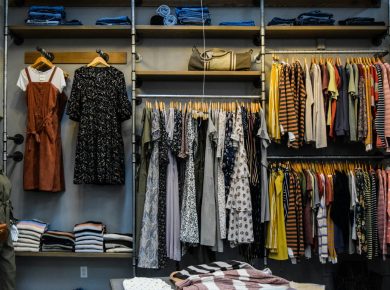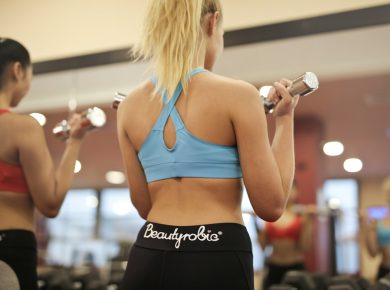Introduction:
In the ever-evolving landscape of fashion and apparel, the concept of second skin clothing has emerged as a revolutionary trend, redefining comfort, functionality, and style. Unlike traditional garments, second skin clothing offers a seamless integration with the body, providing a snug fit and enhanced performance. In this article, we delve into the essence of second skin clothing, exploring its benefits, applications, and how it differs from conventional attire.

The Concept of Second Skin Clothing:
Second skin clothing, as the name suggests, refers to garments that mimic the feel and flexibility of one’s natural skin. These garments are designed to conform closely to the body’s contours, offering a personalized fit and unrestricted movement. Whether it’s activewear for athletes, compression garments for medical purposes, or everyday apparel for fashion enthusiasts, second skin clothing is crafted with advanced materials and innovative construction techniques to provide a seamless and comfortable wearing experience.
Sure, here’s a simple example of a table:
| Fruit | Quantity | Price per Unit ($) |
|--------------|----------|--------------------|
| Apple | 10 | $0.50 |
| Banana | 15 | $0.40 |
| Orange | 8 | $0.60 |
| Pineapple | 3 | $1.20 |This table lists different fruits along with their respective quantities and prices per unit.
Benefits of Second Skin Clothing:
The rise of second skin clothing is fueled by its myriad of benefits, both practical and aesthetic. Here are some key advantages:

- Enhanced Comfort: Second skin clothing eliminates the discomfort associated with bulky seams, tags, and restrictive fabrics, allowing wearers to move freely and comfortably throughout the day.
- Improved Performance: Athletes and fitness enthusiasts benefit from second skin activewear, which offers moisture-wicking properties, temperature regulation, and muscle support, enhancing performance during physical activities.
- Body Contouring: Second skin garments are designed to hug the body’s natural curves, creating a flattering silhouette and boosting confidence in wearers.
- Versatility: From casual wear to performance apparel, second skin clothing spans a wide range of styles and functions, catering to diverse preferences and lifestyles.
- Therapeutic Effects: Compression garments, a subset of second skin clothing, are used for medical purposes to improve circulation, reduce swelling, and alleviate discomfort associated with certain medical conditions.
How Second Skin Clothing Differs from Regular Clothing:
The distinction between second skin clothing and regular attire lies in their design, construction, and intended purpose. Here are some key differences:
- Material Selection: Second skin clothing often incorporates advanced fabrics such as moisture-wicking nylon, stretchy elastane, and breathable mesh, whereas traditional clothing may use a broader range of materials including cotton, wool, and polyester.
- Construction Techniques: Second skin garments are crafted using seamless knitting or bonding methods to minimize bulk and eliminate seams, whereas traditional clothing may feature visible seams and stitching for assembly.
- Fit and Feel: Second skin clothing offers a snug, body-hugging fit that feels like a second layer of skin, whereas regular clothing may have a looser or more relaxed fit.
- Performance Features: Second skin clothing may include performance-enhancing features such as moisture management, odor control, UV protection, and compression technology, whereas regular clothing may focus more on aesthetic design and basic functionality.

Conclusion:
Second skin clothing represents a paradigm shift in the fashion and apparel industry, offering wearers a new level of comfort, performance, and style. With its seamless integration with the body, advanced materials, and innovative construction techniques, second skin clothing is poised to reshape the way we think about and experience everyday attire. Whether it’s for athletic pursuits, medical needs, or everyday wear, second skin clothing embodies the evolution of wearable comfort in the modern world.
Frequently Asked Questions (FAQ)
1. What is [Your Product/Service] about?
[Answer to provide a brief overview of your product or service.]2. How can I get started with [Your Product/Service]?
[Instructions on how users can begin using your product or service, including any sign-up processes or necessary steps.]3. What are the key features of [Your Product/Service]?
[Highlight the main features and functionalities of your product or service.]4. Is there a free trial available?
[Indicate if there’s a free trial period for users to test out your product or service.]5. How do I contact customer support?
[Provide contact details for users to reach out to your customer support team for assistance or inquiries.]6. What payment methods do you accept?
[List the accepted payment methods for purchasing your product or service.]7. Can I cancel or modify my subscription?
[Explain the process for canceling or modifying subscription plans, if applicable.]8. Is there a mobile app available?
[Inform users if there’s a mobile app version of your product or service and where they can download it.]9. Do you offer refunds?
[Clarify your refund policy and any conditions under which refunds are granted.]10. How secure is my data with [Your Product/Service]?
[Assure users about the security measures in place to protect their data and privacy.]



